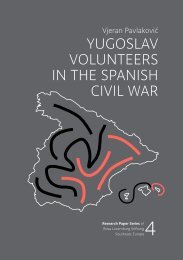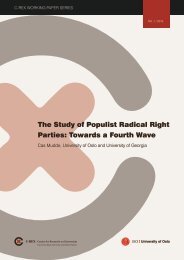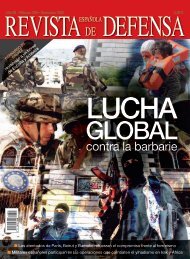SUMMARY
2016_classification_of_programmes_against_violent_islamist_extremism.pdf?utm_content=buffer41973&utm_medium=social&utm_source=twitter
2016_classification_of_programmes_against_violent_islamist_extremism.pdf?utm_content=buffer41973&utm_medium=social&utm_source=twitter
You also want an ePaper? Increase the reach of your titles
YUMPU automatically turns print PDFs into web optimized ePapers that Google loves.
4. CONCLUSIONS CONCERNING THE SYSTEMATIC<br />
CLASSIFICATION OF PREVEN-<br />
TION/INTERVENTION OFFERS<br />
This report has created a systematic correlation between a range<br />
of initiatives in the prevention/intervention of Islamist radicalisation.<br />
The point at which the initiatives are put in place in the process<br />
of radicalisation can then be identified. Education work commences<br />
with media protection, which attempts to remove questionable<br />
material even before contact with the anticipated target<br />
group, i.e. adolescents (at risk of radicalisation). It then tries to<br />
raise awareness and ensure the topic is dealt with in a reflective<br />
way. It is about a reflective maturity. In a broader sense, according<br />
to the motto of the Enlightenment, “Sapere aude!” (Have the<br />
courage to use your own mind!), education work contributes to<br />
the search for knowledge and answers to anticipate doubts,<br />
sweeping judgements and “false assumptions”. Thus it is to be<br />
chiefly classified as primary prevention. While institutional networks<br />
promote the exchange of knowledge and experience in the<br />
crossover between key individuals and institutions, targetoriented<br />
networks are aimed at creating a general age-specific social<br />
base. At the level of target group orientated counselling, the<br />
field of counselling work focuses on specific topics and issues,<br />
which are of concern to adolescents and young adults and in<br />
which they are involved.<br />
The measures taken in primary and secondary prevention focus on<br />
specific fields of causes or interactions that appear relevant to the<br />
phenomenon, such as the imparting of knowledge or the activation<br />
of the peer group. In the case of tertiary prevention/intervention,<br />
multiple causes of radicalisation and the different<br />
developmental paths gain new meaning in the radicalisation<br />
process.<br />
The cultural/religious background is seen as an important point of<br />
reference for preventive work. When considering the individual<br />
initiatives, and especially in the interviews with practitioners from<br />
the field of tertiary prevention/intervention, it became clear that<br />
prevention must take place at the micro level and must involve<br />
the macro and meso levels. Individuals, who, during their socialisation,<br />
have learned to deal with losses and failures, have stable<br />
25








